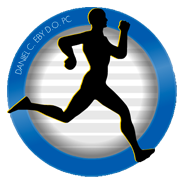Separated Shoulder
Did you fall onto your shoulder or with your hand to catch yourself? Do you have sharp pain over the collar bone near your shoulder?
A shoulder separation occurs when the outer end of the collarbone separates from the end of the shoulder blade because of torn ligaments. This injury occurs most often from a blow to the shoulder or a fall on a shoulder or outstretched hand or arm.
Risk Factors
- Trauma to your shoulder
- Falling on your outstretched hand
- Collision sports, such as football

Symptoms
- Painful shoulder after injury
- Lump over the end of your collarbone
- Pain worsens by touching the opposite shoulder with your hand
Imaging and Diagnosis
X-rays of the shoulder and collarbone can show the separation. The separation is classified based upon how large the separation and the position of your collarbone. Depending on the way the ligaments are torn, the treatment can vary from observation to surgical fixation.
Treatment
Most pain occurs for the first few weeks after injury.
Minor separations will typically heal in 6 to 12 weeks. You may need to rest your arm in a sling, apply ice, and change what you do at home, work or school. Anti-inflammatory medications can help decrease your pain.
Major separations may require a surgical fixation in order to properly heal. If not appropriately corrected, most patients will develop post-traumatic arthritis in the acromioclavicular joint.
Athletes may require further treatment and healing time before returning to play depending upon the severity of the injury. In specific sports, protected equipment may be recommended by Dr. Eby and staff. For instance, football players may want to buffer their shoulder pads to prevent the reoccurrence of the original injury.
McMahon, Patrick J., and Harry B. Skinner. Current Diagnosis & Treatment in Orthopedics. 6th ed., McGraw-Hill Medical, 2021.
Jennifer, Rynders, and Sara D Hart. Orthopaedics for Physician Assistants. 1st ed., Elsevier – Health Science, 2013.
